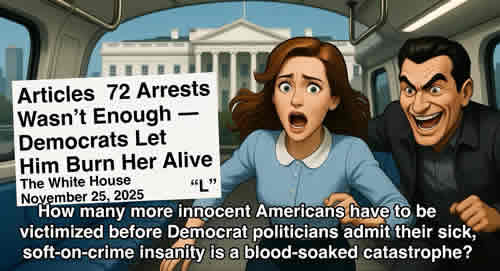New York Gov. Kathy Hochul urged residents to brace for hazardous Thanksgiving travel as a potent lake effect snow band and strong winds move into Western and Central New York and the North Country, with some areas forecast to see up to two feet of accumulation. The state has deployed additional plow operators, trucks, and emergency personnel, while transportation and utility agencies are preparing for round-the-clock operations to keep highways open and power service stable during the holiday rush. Officials are advising motorists to leave extra time, avoid driving during periods of intense snowfall, and stay well behind snowplows, which will be operating at reduced speeds to keep roads treated. The state is also activating Code Blue protections as temperatures drop, directing local social services agencies to ensure shelters are accessible for people experiencing homelessness. Residents are being urged to follow cold-weather safety guidance, including precautions against frostbite, hypothermia, and carbon monoxide poisoning, and to sign up for real-time weather and emergency alerts by texting their county or borough name to 333111.
Governor Hochul Reminds New Yorkers to Travel Safely Ahead of Thanksgiving Lake Effect Snow
Governor Hochul Deploys Additional Resources in Anticipation of First Significant Lake Effect Event of the Season Set to Impact Parts of Western New York, Central New York and the North Country Today Through Saturday
Thanksgiving Holiday is Busiest Travel Time of the Year; Leave Extra Time for Travel and Avoid Travel During Periods of Intense Snow
New Yorkers Can Sign Up for Weather and Emergency Alerts by Texting 333111
Governor Kathy Hochul today reminded New Yorkers to travel safely ahead of a lake effect snow system set to impact areas across the state during the Thanksgiving holiday. Areas across Western New York south of Buffalo could see between 12 and 18 inches of total snow, while Syracuse has the potential for eight to 12 inches and parts of Central New York north of Syracuse could see between one and two feet. A wind advisory also is in effect for portions of Western New York, Central New York, the Finger Lakes and the North Country. Travel around the Thanksgiving holiday is the busiest of the year, and snow paired with high winds increases the risk of blowing and drifting snow. Those traveling for the holiday should leave themselves extra time to reach their destinations and avoid traveling during intense periods of snow. Snowfall is expected to begin tonight and hit peak rates Thursday into Friday.
“Thanksgiving is the busiest travel time of the year, and as we manage a lake effect snow system moving into our state, we’re taking proactive measures to keep roads clear and New Yorkers safe,” Governor Hochul said. “I’ve directed state agencies to do whatever they can to ensure families can travel safely during the coming days, and I encourage New Yorkers to take the necessary precautions to protect themselves and their families.”
In addition to preparing for snow, New Yorkers should also prepare to protect against the dangers that can result from colder weather. Under state regulation, a Code Blue is automatically in effect whenever the temperature and wind chill equal less than 32 degrees. Local social services districts are required to take necessary steps to ensure those experiencing homelessness have access to shelter and that shelter hours are extended. New Yorkers are encouraged to review these cold weather tips from the state Department of Health; additional tips for preventing frostbite and hypothermia information about carbon monoxide poisoning and ways to prevent it; details on the proper use of generators; and safe winter driving tips.
The state Department of Labor advises workers and employers to engage in extreme cold weather best practices such as:
- Limit outdoor work, provide frequent breaks in warm areas and schedule outdoor work during the warmest times of the day.
- Ensure access to clean drinking water.
- Stay hydrated with warm beverages and avoid caffeine.
- Wear proper personal protective equipment, including at least three layers of clothing, gloves or mittens, thick socks, insulated footwear and a hat, hood or hard hat liner.
The National Weather Service has issued lake effect snow warnings, winter storm watches, winter weather advisories and wind advisories, and New Yorkers should closely monitor their local forecasts and look for updates. For a complete listing of weather alerts, visit the National Weather Service website at alerts.weather.gov.
New Yorkers also should enable emergency alerts on their mobile phones, and text their county or borough name to 333111 so they can receive text messages about real-time weather and emergency alerts.
Agency Preparations
Division of Homeland Security and Emergency Services
The Division’s Office of Emergency Management is in contact with its local counterparts and is prepared to facilitate any local requests for assistance. State stockpiles are ready to deploy emergency response assets and supplies as needed. The State Watch Center, New York’s 24/7 alert and warning hub, is closely monitoring the storm track and statewide impacts.
Department of Transportation
The state Department of Transportation is prepared to respond with 3,506 operators and supervisors available statewide. Staff can be configured into any type of response crew needed for the operation (plow, drainage, chipper, load and haul, cut and toss). Additionally, 75 incident command system personnel are available to support the event as needed. All residency locations will remain staffed for 24/7 operations throughout the duration of the event and priority cleanup operations. Fleet mechanics in affected areas will be staffing all main residency locations 24/7 to perform repairs as needed to keep trucks on the road.
To further assist operations in Western New York, a total of 35 staff, including 26 plow truck operators, three supervisors, six equipment operator instructors, and seven plow trucks are being deployed as follows:
- Eight operators, one supervisor, two equipment operator instructors, and three plow trucks from the Capital Region.
- Eight operators, one supervisor, three equipment operator instructors, and four plow trucks from the Mohawk Valley
- 10 operators, one supervisor, and one equipment operator instructor from the Mid-Hudson Region.
All available response equipment is ready to deploy. Statewide equipment numbers are as follows:
- 1618 large plow trucks (Western NY: 225, North Country: 165)
- 339 large loaders (Western NY: 45, North Country: 46)
- 148 medium duty trucks with plow (Western NY: 13, North Country: 11)
- 36 large snow blowers (Western NY: 6, North Country: 7)
- 52 tow plows (Western NY: 5, North Country: 5)
- 16 graders (Western NY: 2, North Country: 3)
Equipment Operator Instructors will be engaged in all areas receiving snowfall to perform plow operator training. Six additional equipment operator instructors and a supervising equipment operator instructor have been deployed to Western New York.
Traffic signal crews in impacted areas have been briefed on the pending weather. Generator stockpiles are being readied to support dark signals.
Traffic Management Centers in Western New York and the North Country will begin posting messages Wednesday morning for pending wind and lake effect snow. All other affected regions will be posting weather-related messages.
For real-time travel information, motorists should call 511 or visit www.511NY.org or the mobile site at m.511ny.org, New York State’s official traffic and travel information source.
Thruway Authority
The Thruway Authority is ready to respond with 685 operators and supervisors available. Statewide equipment numbers and resources are listed below:
- 338 large and medium duty plow trucks
- 10 tow plows
- 60 loaders
- 132,000+ tons of salt on hand
Variable Message Signs and social media (X and Facebook) are utilized to alert motorists of winter weather conditions on the Thruway.
Drivers are reminded that Thruway snowplows travel at about 35 miles per hour — which in many cases is slower than the posted speed limit — to ensure that salt being dispersed stays in the driving lanes and does not scatter off the roadways. The safest place for motorists is well behind the snowplows where the roadway is clear and treated.
The Thruway Authority encourages motorists to download its mobile app which is available for free on iPhone and Android devices. The app provides motorists direct access to real-time traffic information, live traffic cameras, and navigation assistance while on the go. Motorists can also sign up for TRANSalert e-mails and follow @ThruwayTraffic on X for the latest traffic conditions along the Thruway.
Department of Public Service
The State Department of Public Service continues to remain engaged with the regulated electric utilities to ensure adequate preparations are being made for the incoming Lake Effect storm system. The department’s priority remains on safeguarding reliable and resilient electric service for New Yorkers throughout this holiday storm by maintaining regulatory oversight of the utilities’ preparedness and response to any outages that may occur.
New York’s utilities currently have approximately 5,760 workers available statewide to engage in damage assessment, response, repair, and restoration efforts across the State. Department staff will track utilities’ work throughout the event and ensure utilities shift appropriate staffing to regions that experience the greatest impact.
The department has additional information available on Winter Preparedness, including Winter Safety and consumer protections available at: Winter Preparedness | Department of Public Service. The public is encouraged to contact the Department’s Office of Consumer Services for complaints or concerns regarding their utility Contact Us | Department of Public Service.
New York State Police
State Police is closely monitoring the forecast and coordinating with the Division of Homeland Security and Emergency Services, the Department of Transportation, the Thruway Authority, Department of Environmental Conservation, Office of Parks, Recreation and Historic Preservation, and local partners as winter weather moves into the state. Troopers and specialized units are ready and standing by across all regions to respond to any weather-related emergencies, assist motorists and support local communities if conditions deteriorate.
New Yorkers are reminded to call 911 if they have an emergency.
Department of Environmental Conservation
The Department of Environmental Conservation’s (DEC) Emergency Management staff, Environmental Conservation Police Officers, Forest Rangers and regional staff remain on alert and continue to monitor weather forecasts. Working with partner agencies, DEC is prepared to coordinate resource deployment of all available assets, including first responders, to targeted areas in preparation for potential impacts due to snow and ice.
DEC reminds those responsible for the removal and disposal of snow to follow best management practices to help prevent flooding and reduce the potential for pollutants such as salt, sand, oils, trash and other debris from affecting water quality. Disposal of snow in local creeks and streams can create ice dams, which may cause flooding. Public and private snow removal operators should be aware of these safety issues during and after winter storms. Additional information is available at Division of Water Technical and Operational Guidance Series: Snow Disposal.
DEC reminds local officials to watch for potential flooding in their communities. Municipalities are encouraged to undertake local assessments of flood-prone areas and to remove any accumulating debris. DEC permits and authorization are not required to remove debris unless stream banks or beds will be disturbed by debris removal and/or the use of heavy equipment.
Municipalities and local governments are advised to contact DEC’s Regional Permit Administrators if assistance is required and to help determine if a permit is necessary. DEC can issue Emergency Authorizations to expedite approval of projects in place of an individual permit. DEC approves these authorizations for situations that are deemed an emergency based on the immediate protection of life, health, general welfare, property or natural resources.
Hiking Safety
Unpredictable winter weather and storms in the Adirondacks, Catskills and other backcountry areas can create unexpectedly hazardous conditions. Visitors should be prepared with proper clothing and equipment for snow, ice and cold to ensure a safe winter experience. Snow depths range greatly throughout the Adirondacks, with the deepest snow at higher elevations in the High Peaks region and other mountains over 3,000 feet. Lower elevation trails have mixed conditions of snow, ice, slush and mud including many trails in the Catskill Mountains where the potential for icy trail conditions exist.
Backcountry visitors should Hike Smart and follow proper safety guidelines. Plan trips accordingly. In an emergency, call 9-1-1. To request Forest Ranger assistance, call 1-833-NYS-RANGERS.
Hikers in the Adirondacks are encouraged to check the Adirondack Backcountry Information webpages for updates on trail conditions, seasonal road closures and general recreation information.
Office of Parks, Recreation and Historic Preservation
New York State Park Police and park personnel are on alert and closely monitoring weather conditions and impacts. Response equipment is being fueled, tested and prepared for storm response use. Park Police have placed tracks on the UTVs/ATVs and prepared snowmobiles for deployment. Park sawyer crews are available to assist DOT with clearing downed trees and branches.
Park visitors should visit parks.ny.gov, check the free NY State Parks Explorer mobile app or call their local park office for the latest updates regarding park hours, openings and closings.
Winter Driving Safety Tips
- Monitor the forecast for your local area and to where you are traveling.
- Avoid unnecessary travel.
- If you must travel, make sure your car is stocked with survival gear: blankets, a shovel, flashlight and extra batteries, extra warm clothing, set of tire chains, battery booster cables, quick energy foods and brightly colored cloth to use as a distress flag.
- If you have a cellphone or other communications device such as a two-way radio available for your use, keep the battery charged and keep it with you whenever traveling. If you should become stranded, you will be able to call for help, advising rescuers of your location.
- The leading cause of death and injuries during winter storms is vehicle crashes. Before getting behind the wheel, make sure that your vehicle is clear of ice and snow; good vision is key to good driving. Plan your stops and keep more distance between cars. Be extra alert and remember that snowdrifts can hide smaller children. Always match your speed to the road and weather conditions.
- It is important for motorists on all roads to note that snowplows travel at speeds up to 35 mph, which in many cases is lower than the posted speed limit.
- Snowplows often operate side by side on interstate highways to safely clear several lanes at one time.
- Motorists and pedestrians also should remember that snowplow drivers have limited lines of sight, and the size and weight of snowplows can make it very difficult to maneuver and stop quickly. Snow blowing from behind the plow can severely reduce visibility or cause whiteout conditions.
• • Motorists should not attempt to pass snowplows or follow too closely. The safest place for motorists to drive is well behind the snowplows where the roadway is clear and salted. Never attempt to pass a snowplow while it is operating.
November 26, 2025
Albany, NY
Sources: Governor.ny.gov , Midtown Tribune News
Big New York news BigNY.com










